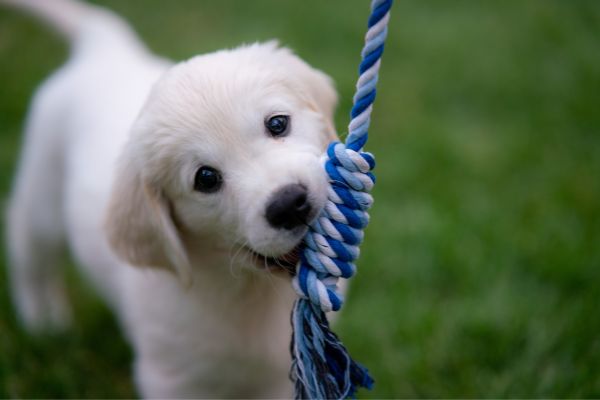Bringing a new puppy into your life is a heartwarming experience filled with cuddles, playtime, and endless joy. However, along with the excitement comes a responsibility that many new pet owners might underestimate: puppy training. Proper training is the foundation of a well-behaved dog and a harmonious relationship between you and your furry friend. Whether you’re navigating housebreaking challenges or teaching basic commands, understanding the essentials of puppy training can transform your experience from stressful to successful.
Why Puppy Training Is Essential from Day One
Starting puppy training early is crucial for shaping your dog’s future behavior. Puppies, like young children, are constantly learning from their surroundings. The habits they form during the first few months can last a lifetime. Without structured training, unwanted behaviors like chewing, barking, or jumping can become ingrained and much harder to correct later on.
Training also provides mental stimulation for your puppy. Dogs are intelligent animals that thrive when challenged in the right ways. Through consistent training, you’re not just teaching obedience but also boosting their confidence and strengthening your bond. This proactive approach ensures your puppy grows into a calm, sociable, and well-mannered adult dog.
Understanding Your Puppy’s Learning Style
Before diving into commands and techniques, it’s helpful to understand how puppies learn. Unlike older dogs, puppies have short attention spans and require patience and repetition. Positive reinforcement is key. This means rewarding your puppy with treats, praise, or affection whenever they exhibit desired behavior. Over time, your puppy will associate good actions with positive outcomes and repeat them willingly.
Equally important is consistency. If you allow your puppy to jump on the couch one day and scold them for it the next, you’re sending mixed signals. Establish clear rules from the beginning and make sure everyone in your household follows them. This clarity helps your puppy learn faster and prevents confusion.
House Training: Setting the Ground Rules
One of the first challenges in puppy training is housebreaking. Teaching your puppy where and when to relieve themselves requires a dedicated routine. Puppies usually need to go outside after eating, drinking, playing, or waking up from a nap. By keeping a consistent schedule, you’ll be able to anticipate their needs and prevent accidents.
In the beginning, it’s wise to supervise your puppy closely indoors. This allows you to spot the signs that they need to go out—sniffing, circling, or whining. When accidents happen—and they inevitably will—clean the area thoroughly to remove any lingering scent that might encourage a repeat offense. Avoid punishment, as it only instills fear and confusion. Instead, focus on reinforcing the correct behavior every time they go in the right spot.
Crate Training: Creating a Safe Space
Crate training is another essential aspect of puppy training that often gets misunderstood. A crate isn’t a punishment; rather, it’s a safe and cozy space where your puppy can relax and feel secure. Used properly, crates can aid in house training, prevent destructive behavior when unsupervised, and give your puppy a personal den to call their own.
Introduce the crate gradually, making it a positive experience. Encourage your puppy to enter the crate using treats and toys, and never force them inside. Keep the door open at first, allowing them to explore at their own pace. Once your puppy becomes comfortable, begin closing the door for short periods while you’re nearby. Eventually, they’ll learn to enjoy and even seek out the crate as a place of comfort.
Teaching Basic Commands and Obedience
A well-trained puppy should understand basic commands such as “sit,” “stay,” “come,” and “leave it.” These commands aren’t just impressive party tricks—they’re essential tools for keeping your puppy safe and well-behaved in various situations. For instance, a reliable “come” command can prevent your puppy from running into a dangerous street.
Start with one command at a time, using short training sessions to prevent your puppy from becoming overwhelmed. Use a cheerful voice, be generous with rewards, and end each session on a positive note. As your puppy masters one command, move on to the next while continuing to reinforce what they’ve already learned.
Socialization should also be part of your obedience training. Exposing your puppy to new people, environments, and other animals in a controlled way helps prevent fear and aggression later in life. Well-socialized puppies grow up to be friendly and adaptable dogs who can handle various scenarios with ease.
Common Training Challenges and How to Overcome Them
Even with the best intentions, puppy training can present challenges. Nipping and biting, for example, are common behaviors that stem from teething and play. Teaching bite inhibition by redirecting their attention to chew toys or letting out a firm “ouch” when they nip can be effective.
Another common issue is excessive barking. Puppies bark to communicate, but when it becomes a nuisance, it’s important to identify the cause. Are they bored, anxious, or simply seeking attention? Addressing the root cause and redirecting their energy through training or play is usually more effective than scolding.
Patience is vital during these times. Remember, your puppy isn’t being difficult on purpose—they’re learning how to be a dog in your world. Progress may be slow, but persistence will yield results.
The Importance of Positive Reinforcement and Bonding
Puppy training is about more than commands and discipline; it’s about building a trusting relationship. When your puppy feels safe, respected, and understood, they are more likely to respond to training positively. Celebrate their successes, no matter how small, and offer reassurance when they falter.
Training sessions are excellent opportunities to bond with your puppy. They provide structure and purpose while reinforcing the connection between the two of you. Over time, these shared experiences lay the groundwork for a lifelong partnership based on trust and affection.
Staying Committed to Long-Term Success
Training doesn’t end once your puppy knows a few commands. Like humans, dogs need regular reinforcement and mental stimulation throughout their lives. As your puppy grows into adulthood, you’ll face new challenges that require continued guidance. Revisiting old lessons, teaching advanced tricks, or simply practicing good behavior in public settings can keep your dog sharp and engaged.
If you find yourself struggling or unsure about how to proceed, don’t hesitate to seek help from professional trainers or attend group obedience classes. These resources can provide tailored advice and ensure your training methods align with your puppy’s individual personality and needs.
Conclusion: Building a Strong Foundation for a Happy Future
Puppy training is one of the most rewarding investments you can make in your dog’s future. It sets the stage for a well-adjusted, confident, and obedient companion who brings joy to your life every day. While it requires time, patience, and consistency, the results are more than worth the effort. By understanding your puppy’s needs, applying effective techniques, and nurturing your bond through positive interactions, you’ll lay a solid foundation for a lifelong friendship. Remember, every well-behaved dog starts with a well-trained puppy—your journey begins now.



